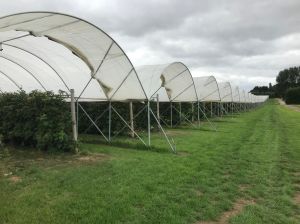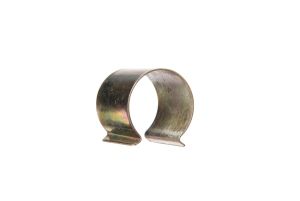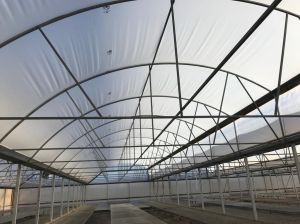Anti Condensation tunnel film, how does it work?

Why drops on our tunnel film?
This is because of surface tension. Now it gets a little technical. Droplets are formed because of the tendency of liquid surfaces to shrink to the smallest possible surface area. It comes from the difference in surface tension. Surface tension is measured in dyn/cm units. The difference in surface tension between water (72 dyn/cm) and polyethylene (31 dyn/cm) or EVA (33 dyn/cm) causes the water to form droplets. These droplets, which accumulate on the foil, will increase in size and eventually fall off the foil.

Negative effects of accumulation of water droplets
- Reduction of light transmission.
- Constant dripping on plants increases humidity and promotes leaf diseases.
- Lens effect, a focal point just like a magnifying glass, can cause burns.

Anti Condensation
Anti-condensation - also known as Anti-Drup - prevents drop formation by turning the droplets into an even thin layer.

To prevent condensation or drop formation, anti-condensation additives are added to the film. These additives, which consist of molecules with a hydrophobic tail and a hydrophilic head, migrate to the film surface, increasing the surface tension; this allows a single layer of water to be formed without disturbing the optical properties and without dripping.

Once there is a uniform water layer on the film, the migration of Anti-Condens to the surface starts again: new molecules migrate to the surface washed by the water flow, and so on. Due to gravity, the water layer flows down into the gutters, hence the importance of sufficient drainage (which explains why it is very difficult to have an Anti-Condens effect in horizontal film installation).
Lifespan of the Anti-condensation
- Use of the appropriate Anti-Condens additive depending on the application and climate.
- Suitable amount of Anti-Condens in the film.
- Thickness of the film (the thicker the film, the more Anti-Condens it can contain).
- Structure of the film, e.g. balance between different polymers.
Conditions of use that affect the life of the Anti-Condens:
- Extreme temperatures (high/low) exposure to tunnel film.
- Structure of greenhouse: efficient ventilation, height, adequate roof pitch.
- Greenhouse conditions: humidity, water leaks, high evaporation from the floor (mulch).
- Area without crop.
A water layer on the film acts as an IR barrier and reduces the cooling of greenhouses during cold nights. Therefore, the combination of Anti-Condens and IR is recommended by FruitSecurity Holland.
|
Gerben van Veldhuizen CEO & fruitprotection specialist My mission is to help as many fruit growers as possible get a good harvest. |












